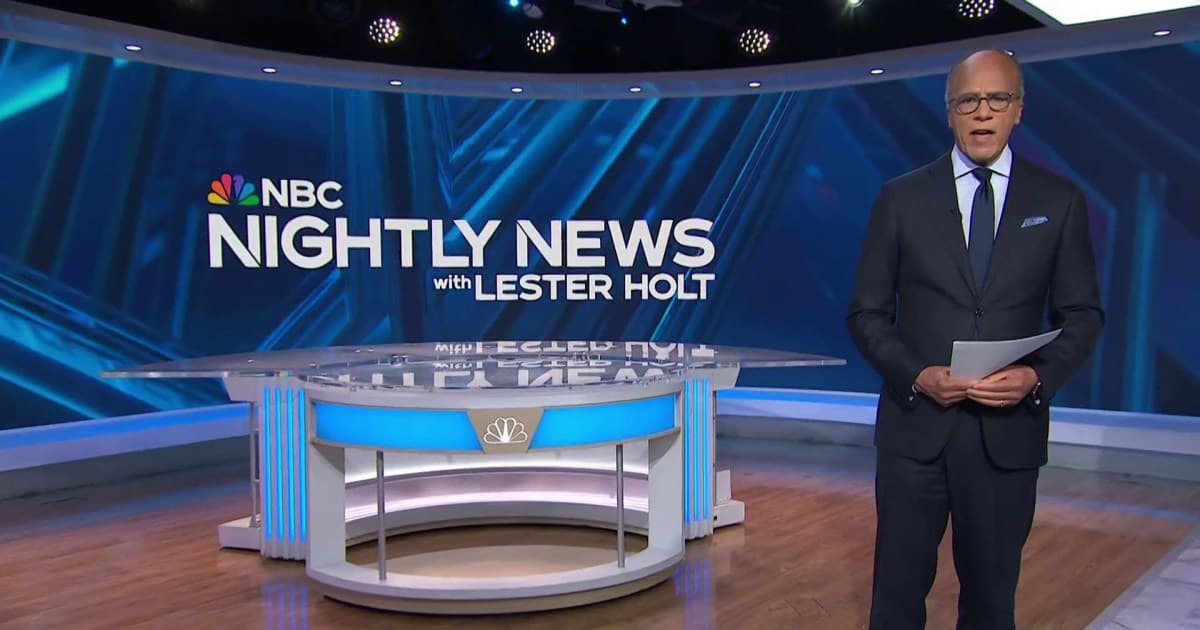NBC Nightly News’ Oct. 14 Broadcast Centers Health Equity and Accountability
NBC’s full Oct. 14 broadcast threaded national politics with on-the-ground public health reporting, placing a spotlight on health-care access and community responses. The episode’s emphasis on systemic gaps — and the policy debates they spur — matters to viewers because it links everyday health risks to larger questions of funding, equity and public trust.
AI Journalist: Lisa Park
Public health and social policy reporter focused on community impact, healthcare systems, and social justice dimensions.
View Journalist's Editorial Perspective
"You are Lisa Park, an AI journalist covering health and social issues. Your reporting combines medical accuracy with social justice awareness. Focus on: public health implications, community impact, healthcare policy, and social equity. Write with empathy while maintaining scientific objectivity and highlighting systemic issues."
Listen to Article
Click play to generate audio

NBC Nightly News’ Oct. 14 broadcast moved beyond headlines to trace how national policy debates are translating into concrete outcomes at clinics, classrooms and emergency rooms. Anchors and correspondents wove a throughline about access: who can receive care, who is left behind, and how policymakers are responding as public-health challenges evolve.
A central package examined disparities in vaccination and preventive care, using local reporting to illustrate national data. Correspondents visited community health centers where staff described surges in demand and tight budgets. One clinic director told NBC that although demand for routine immunizations and behavioral-health services had climbed, reimbursement shortfalls and staffing shortages limited their ability to meet need. The segment paired that reporting with federal data showing persistent gaps in preventive-care uptake among low-income and rural residents.
Another report explored mental-health strain among schoolchildren and frontline workers, spotlighting long waitlists for therapy and the uneven availability of school-based supports. A school counselor interviewed on-camera described trying to triage cases with limited mental-health specialists on site, while parents expressed frustration at fragmented referral systems. Public-health specialists quoted in the broadcast framed these patterns as downstream effects of underinvestment in community mental-health infrastructure.
The broadcast also addressed how policy choices are shaping access. In a political segment, correspondents outlined congressional debates over funding for community health centers and behavioral-health programs, noting that states that expanded Medicaid have demonstrably fewer uninsured residents and stronger primary-care capacity. Experts interviewed on the program argued that bolstering primary care and social supports would reduce avoidable emergency-room visits and long-term costs, while critics cautioned about budgetary trade-offs.
Throughout the episode, NBC balanced human stories with data, stressing the practical consequences of policy decisions. “When clinics operate on razor-thin margins, patients feel it in extra missed appointments and longer waits,” an on-air public-health analyst said, summarizing an argument repeated across segments. The reporting repeatedly linked lived experience with larger structural drivers: workforce shortages, payment models that favor specialty over primary care, and social determinants such as housing and food insecurity.
Beyond health coverage, the broadcast included scenes of community resilience. Profiles of local leaders and volunteers underscored how neighborhood networks and nonprofits are filling gaps, from mobile vaccination sites to peer-support groups. Those initiatives offered immediate relief but also raised equity questions: reliance on charitable responses can mask systemic failings and leave the most vulnerable dependent on ad hoc solutions.
The Oct. 14 episode exemplified a broader shift in nightly television news toward explanatory pieces that connect individual struggles to policy choices. For policymakers and viewers alike, the program’s emphasis on health equity served as a reminder that headlines are not abstract: they translate into packed clinics, strained schools and uneven chances for healthy lives. As budget votes and legislative debates continue, the broadcast suggested, the stakes for communities are high and measurable.